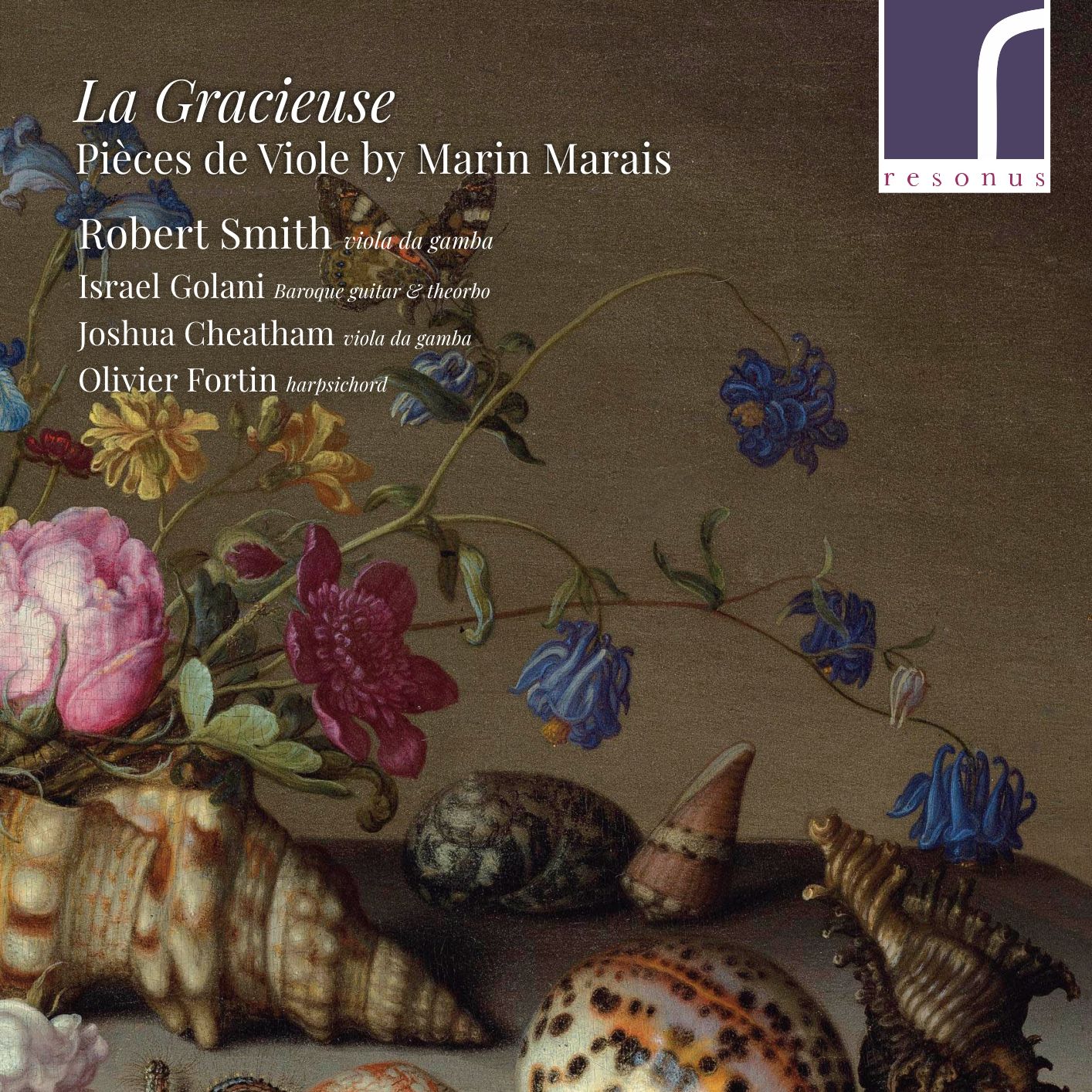La Gracieuse: The Exquisite Music of Marin Marais
This is a significant release, one that enables us to properly appreciate the genius of Marin Marais

Viola da gambist Robert Smith is one of the finest exponents of his instrument around. I have had the privilege and pleasure of hearing him twice live in the glorious surroundings of the Dordogne: in 2019 as part of the ensemble Concerto Delaborde (review), and in 2017 as part of the group La Gazette Musicale in Boccherini (as part of the “Itinéraire” itself: review).
In a previous post on Bach's Viola da gamba Sonatas performed by Robert Smith, also on the excellent resonus label, I sugested that the Marais disc would be the subject of a future post. here it is!
Marin Marais (1656-1728), a pupil of Lully, is a major figure of the Late Baroque who left some 600 or so pieves for viola da gamba. he was, as Donald Jay Grout its it in his Music in the Baroque Era, a “celebrated gambist”: he wrote one of the first Pièces en Trio ever to be published in France (1692). Marais loved descriptive titles (so typical of his time in thsi regard) - but went one step further than most contemporaries by, in one case, describing a gall-stone operation. Together with Antoine Forqueray, Marais was the formost viol composer of his generation. he represents an apex: within 12 years after his death, the viol was losing its battle against teh violin for prominence: there was even a defending treatise (Hubert Le Blanc’s Défense de la basse de viole contre les entreprises du violon et les prétentions du violoncelle)
We know Marais, born in Paris in 1656, studied the viol with Sainte-Colombe, but only for six months (Colombe said he did not have any more to teach the boy): when Saint Colombe died, in 1700, Marais write his Tombeau pour Monsieur de Saint-Colombe (1702). It is incredibly touching: Here’s Jordi Savall and friends on Alia Vox:
To decide upon which pieces to choose for this disc, Robert Smith played through all five volumes of Marais’ gamba music. As the years passed for Marais, the young firebrand cooled to a master composer capable of maximal expression through minimal means, and Smith’s magnificent disc gives a real sense of that progression.
Smith plays on a Colichon model gamba by Pierre Bohr, and is joined by Israel Golani (theorbo by Klaus Jaobssen and Baroque guitar after Giovanni Tessler by Ivo Magherini), Joshua Cheattham (also viola da gamba, Barack Norman model, by François Bodart), Olivier Fortin (harpsichord, flemish, Thomas Power) and Adrian Rodriguez Van der Spoel (percussion)

We start with the Suite in A-Major from the second volume of viol pieces (1701, dedicated to the Duke of Orléans). Smith borrows a Prélude from book IV before a movement, “La Boutade” (The Joke) which Smith describes as “frolicking”. It is, as well:
It is the sixth movement of this suite that is so important, though. Unusually lengthy, Smith states that,
Marais’ compositional competence shnines through in the ‘Fantaisie’ more than any other piece on the recording. In line with the freedom implied in the title of the piece, the movement’s formal structure blends aspects of fugue and passacaglia. the opening A section exhibits almost all the characteristics of a fugue, but soon the dark clouds cast by the A-Minor section yank teh music towards a Passacaglia wirh a ostinato lament bass in regular four-bar units ... In the piece, Marais strikes an admirable balance between music of the past andthe present - deploying the harmonic idiom of the early 18th-century while tipping his hat to the old masters of the 17th-century by using their favourite form.
Here it is:
Marais' Fourth Book was published in 1717. The Suite in E-Minor is comprised of mostly pieces from that book, but finishes with a “daunting” fugue (the “Fugue gaie”). But before we get there we have a magnifcent “Prélude”:
Marais never really left his native Paris but seems to be fascinated by foreign places. In this E-Minor Suite, there is a movement called “La Biscayenne (Tambourin)” that orignated Biscay, a Basque territory, which we can see in video format:
... and this, a “Sarabande a l'espagnol”:
plus this sailors' dance, “La Matelotte”:
This E-Minor Suite is a geographical cornucopia, and the use of drum (Adrian Rodriguez Van der Spoel) is most effective.
The Suite in G-Minor has nine movements and comes from the third book (published in 1711). Marais writes short and relatively easy pieces, suitable for amateurs (as he is at pains to point out in the volume’ s preface). Interestingly. Smith is at his most eloquent in the Sarabande (whose Affekt is echoed in the fifth movement, “La Plainte”).:
Fascinating also that this Suite contains a “Gige La Chicane” an 18th-Century term for a dispute still in use in modern parlance today, but in Canada (Québec, to be exact):
Finally, the Suite in F sharp-Minor Suite, found in an appendix to the Suites (1689). The music of this Suite seems partiicularly profound. Here's the Prélude:
... and here's the remarkable Sarabande:
This is a significant release, one that enables us to properly appreciate the genius of Marin Marais.
